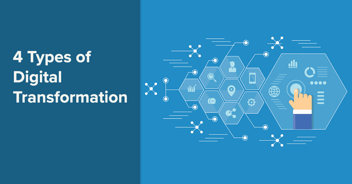Insights
Prioritization at ChaiOne: Walking Through the User’s Perspective
ChaiOne’s prioritization workshops combine user perspectives with objective data to understand the full picture of a company’s workflow issues and their potential solutions. Today we get a sneak peek into ChaiOne’s prioritization workshops and the critical questions they can help you answer.
In our last piece on prioritizing solutions to workflow issues, we introduced the central philosophy of our prioritization workshops; the idea that combining user perspectives with objective business data facilitates thoughtful and successful workflow improvements. In fact, this combination of subjective feedback and objective information routinely helps stakeholders move past their gut assumptions, making room for new solutions to old challenges.
Today we’ll offer a sneak peek into what prioritization looks like at ChaiOne. But, if you missed the previous installment, check it out now to get some background on Prioritization Workshops.
Introducing ChaiOne's Workshops
In our workshops, we start by walking through a client’s current task flow (i.e. the way employees are actually working in the field, which may be very different from the ‘proper’ methods that in-office stakeholders believe is happening).
From the users’ distinct viewpoints, we consider the significance of each pain point and the features or functionality that could potentially address those pain points. For example, we might find that redundant paperwork in a given task flow is a major source of frustration for users in administrative roles—and at the same time, that redundancy may be inflating labor costs.
We propose a future task flow
Once we’ve got a grasp on how tasks are being performed in the real world—and what challenges are present—we follow up with a proposal for a future task flow. The proposed task flow highlights and addresses the pain points of individual user roles, like the admin role in the example above. That way, we can examine the potential benefits, as well as the associated costs, of a new workflow or product feature we might want to implement.
In our example of the admin role, streamlining or automating the paperwork process could massively reduce labor costs and employee frustration. Our future task flow would address this pain point as well the pain points that other user roles are experiencing in the task flow.
That brings up the question: how do we prioritize the needs of our admin users against the needs of other roles, and against larger business goals? How does our proposed future task flow mitigate the perspectives of decision makers with unique perspectives and expectations?
As described in our last blog on prioritization, prioritization is a matter of combining distinct user perspectives with relevant and objective business data. To start to bring these together, we offer a series of probing questions.
Asking the right questions
To put user needs in context and make them useful (and persuasive) for key decision makers, we ask a series of probing questions about the user and the overall task. For example:
- What is the financial cost of this pain point?
- How many end users are affected by this pain point?
- What savings could be made by alleviating this pain point?
- What is the cost of this pain point in terms of employee morale?
- Is this pain point so frustrating that users are implementing an unintended, inefficient or risky workaround to the intended task flow?
With the answers to questions like these, our clients are able to connect the dots and understand the full impact of each suggested new feature, allowing them to assign priority with confidence; they can see exactly what will be gained by new functionality, both for the users and the business. That way, major decisions can be negotiated and settled on with both confidence and clarity.
Where do you go from here?
Remember that understanding the challenges users encounter is only a starting point. To make the most of your resources, it’s critical that you do the hard work of data-driven prioritization; take the time to empathize with your distinct users—and evaluate those users’ needs using objective data—and you’ll be able to pick-and-choose the highest-value solution.



